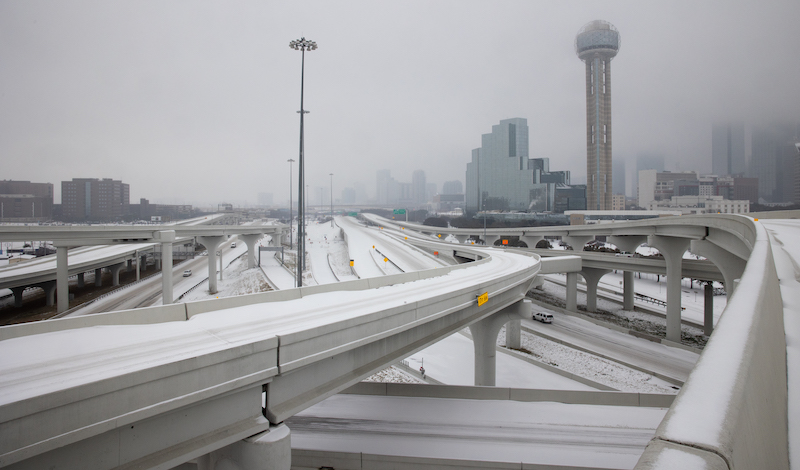
Scholars discuss Texas’s 2021 power grid failure and its implications for the future of energy regulation.
In February 2021, an unprecedented snowstorm upended the lives of millions of Texans. Across the state, the vast majority of Texas residents lost electricity for days as utility officials scrambled to keep up with the historic winter storm.
In a recent article, Colleen M. Baker of the University of Oklahoma College of Law and James W. Coleman of the SMU Dedman School of Law argue that the deregulated structure of Texas’s electricity grid contributed to its ultimate failure last winter. Baker and Coleman contend that more robust state regulation would help the grid meet Texans’ needs amid freezing temperatures.
Texas is one of the very few states that manages its own power grid. The Electricity Reliability Council of Texas (ERCOT), a nonprofit organization and the sole manager of the state’s grid, is responsible for forecasting future weather trends, ensuring that power demand can match consumer needs, and maintaining competitiveness in the energy market.
According to Baker and Coleman, ERCOT misestimated the seasonal forecast for winter 2021, and the colder weather resulted in a much higher consumer demand than anticipated. To prevent a power grid failure resulting from this discrepancy, ERCOT enacted rolling blackouts in households across the state in an effort to balance the grid’s power capacity. Despite the blackouts, the Texas grid eventually was unable to maintain both rolling blackouts and the need to keep enough electricity supplied to support critical infrastructure, such as hospitals.
In addition, the freezing temperatures ushered in by the winter storm resulted in machinery freezing up and breaking down. Because ERCOT typically focused its electricity efforts on combatting Texas heat, the grid was ill-equipped to handle the severe cold. Baker and Coleman recount frozen wind turbines and complications with pumping natural gas—wind and natural gas are two of the primary energy generators in Texas.
Baker and Coleman ask whether Texas should trade out its unregulated structure and join a nationwide power grid. Because Texas evades federal energy regulation, it fosters a greater opportunity for innovative problem-solving to meet changing energy needs.
ERCOT’s autonomy, however, constrains Texas’s ability to tap into other power grids in instances such as 2021’s winter storm. If Texas were to join the ranks of regulated power grids, these complications would likely dissipate.
Baker and Coleman note existing reforms enacted by the Texas state legislature in the wake of the winter storm, which required ERCOT to “weatherize” equipment so it would work in extreme temperatures. But what exactly “weatherization” entails has been left undefined by state legislators and could encompass an expanse of actions, ranging from minor to costly. Baker and Coleman worry that this ambiguity might pose even more barriers to an effective response to energy shortages in the future.
ERCOT’s failure to account for severe winter weather resulted in tragic consequences. To avoid another disaster as temperatures start to drop, Baker and Coleman recommend a series of reforms to address key gaps in the existing power grid, including greater transparency with regulators and the wider public. As the debate surrounding continued deregulation remains, improving the general reliability of Texas’s grid system is a short-term solution for a longer-term issue of ERCOT’s ability to respond and adequately provide for 30 million Texans.



